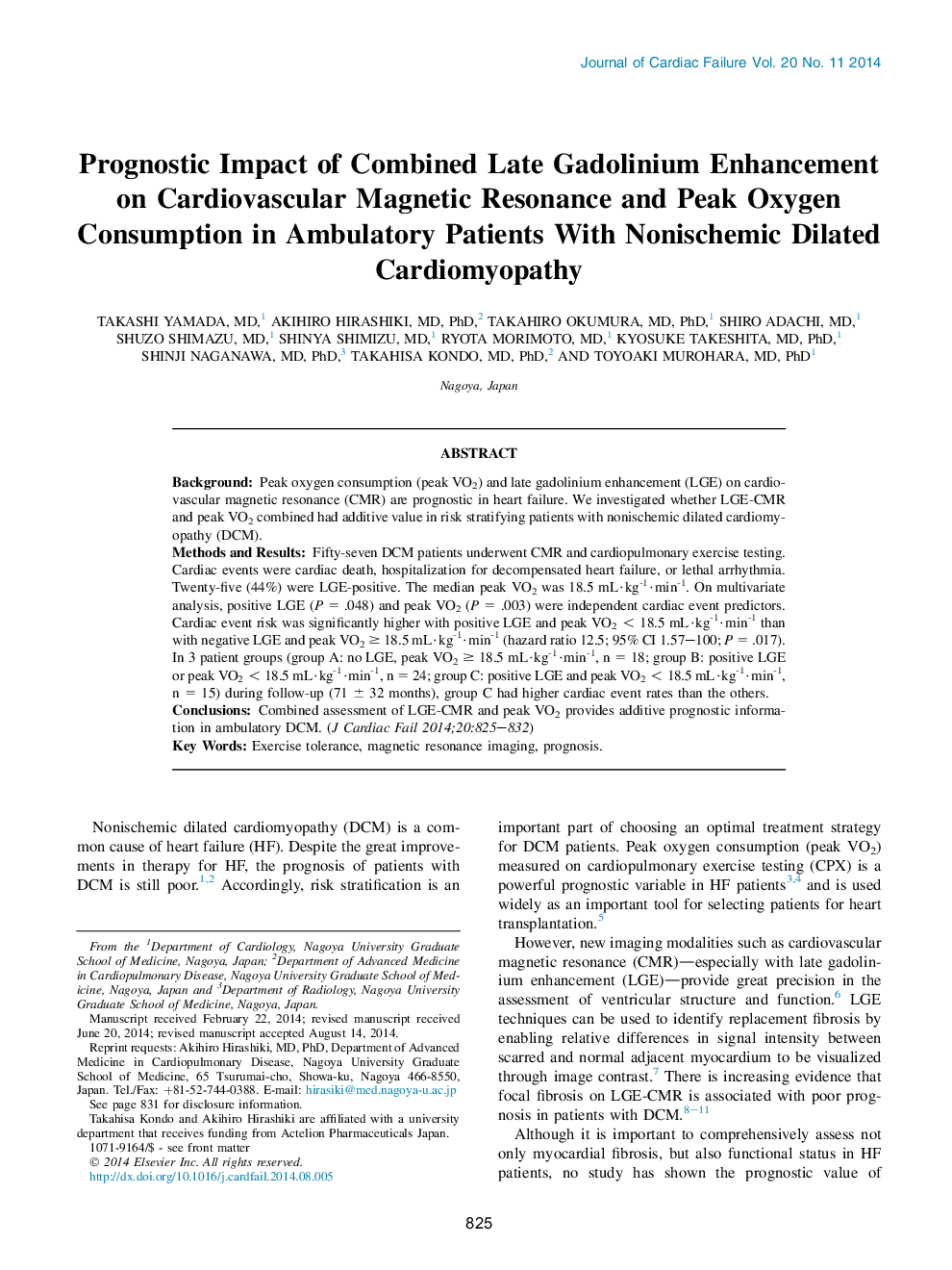| Article ID | Journal | Published Year | Pages | File Type |
|---|---|---|---|---|
| 5983775 | Journal of Cardiac Failure | 2014 | 8 Pages |
â¢We investigated whether LGE-CMR and peak VO2 combined had additive value in risk stratifying patients with nonischemic dilated cardiomyopathy.â¢Positive LGE and peak VO2 were independent cardiac event predictors.â¢The patients with positive LGE and peak VO2 < 18.5 mL·kg-1·min-1 had higher cardiac event rates than the others.
BackgroundPeak oxygen consumption (peak VO2) and late gadolinium enhancement (LGE) on cardiovascular magnetic resonance (CMR) are prognostic in heart failure. We investigated whether LGE-CMR and peak VO2 combined had additive value in risk stratifying patients with nonischemic dilated cardiomyopathy (DCM).Methods and ResultsFifty-seven DCM patients underwent CMR and cardiopulmonary exercise testing. Cardiac events were cardiac death, hospitalization for decompensated heart failure, or lethal arrhythmia. Twenty-five (44%) were LGE-positive. The median peak VO2 was 18.5 mL·kg-1·min-1. On multivariate analysis, positive LGE (P = .048) and peak VO2 (P = .003) were independent cardiac event predictors. Cardiac event risk was significantly higher with positive LGE and peak VO2 < 18.5 mL·kg-1·min-1 than with negative LGE and peak VO2 â¥Â 18.5 mL·kg-1·min-1 (hazard ratio 12.5; 95% CI 1.57-100; P = .017). In 3 patient groups (group A: no LGE, peak VO2 â¥Â 18.5 mL·kg-1·min-1, n = 18; group B: positive LGE or peak VO2 < 18.5 mL·kg-1·min-1, n = 24; group C: positive LGE and peak VO2 < 18.5 mL·kg-1·min-1, n = 15) during follow-up (71 ± 32 months), group C had higher cardiac event rates than the others.ConclusionsCombined assessment of LGE-CMR and peak VO2 provides additive prognostic information in ambulatory DCM.
